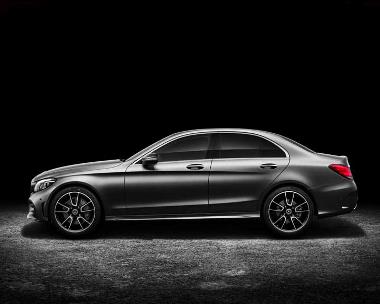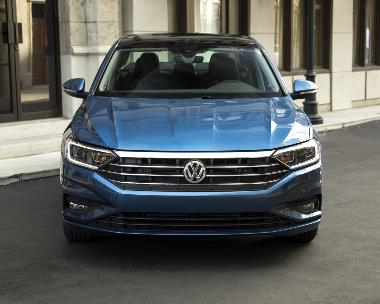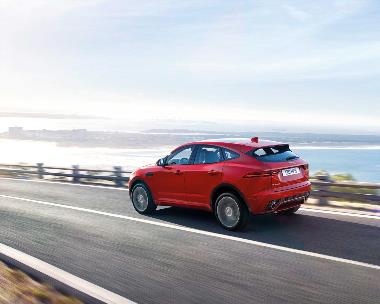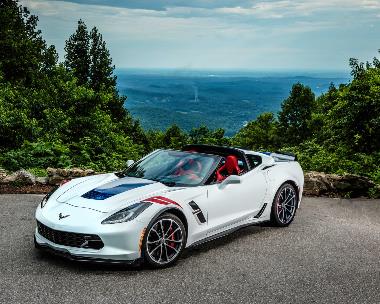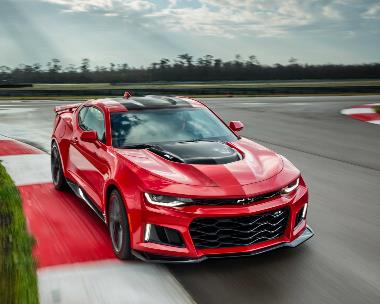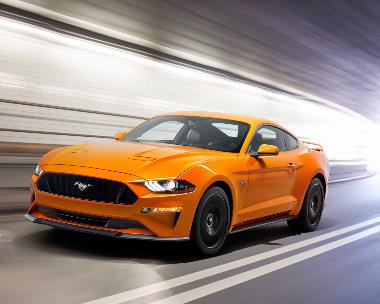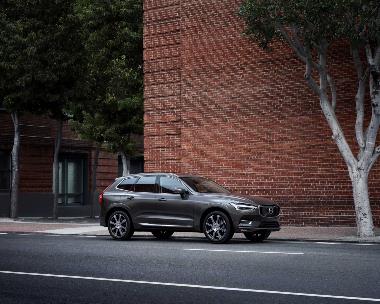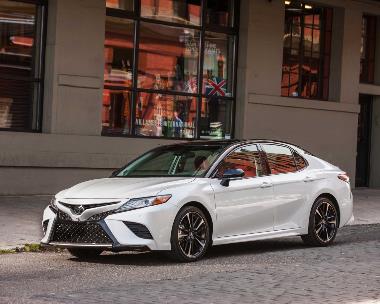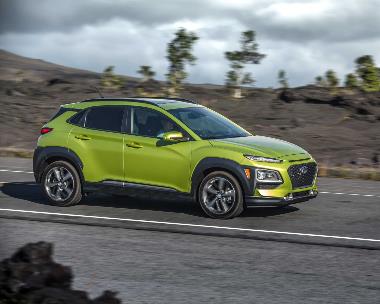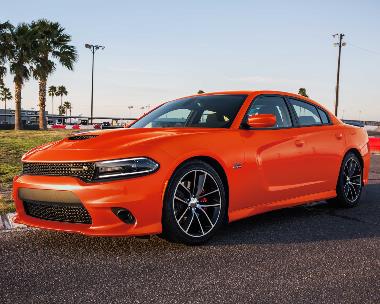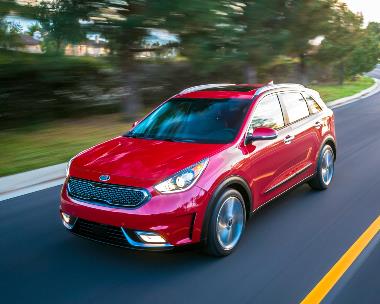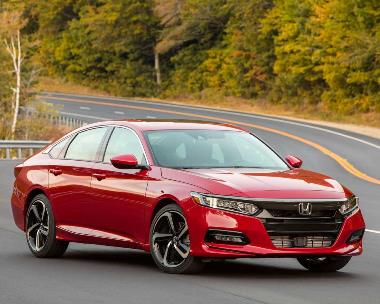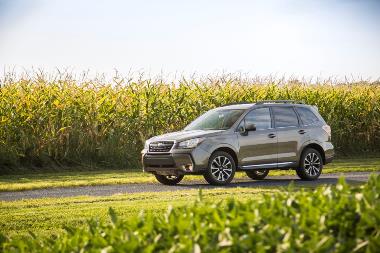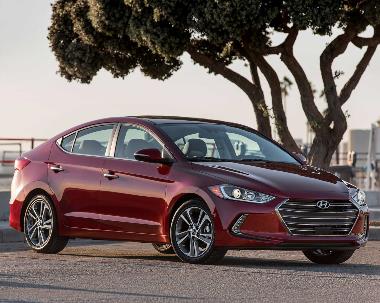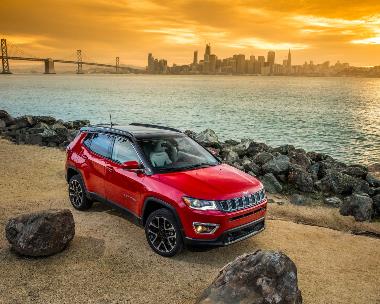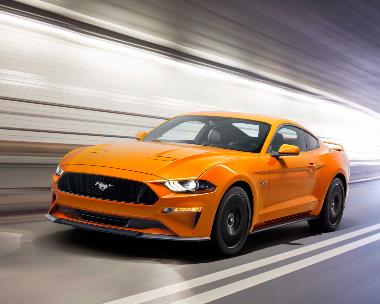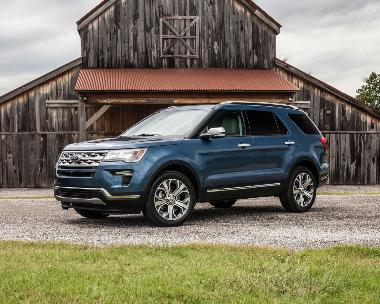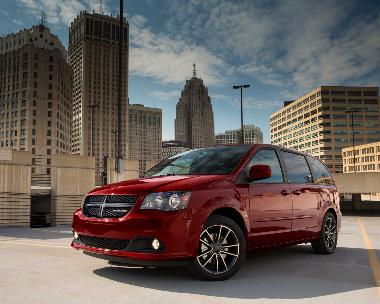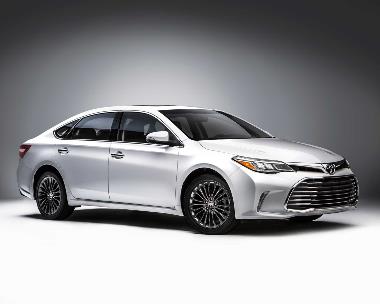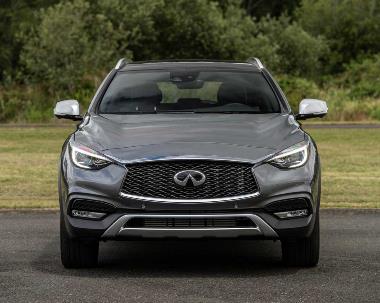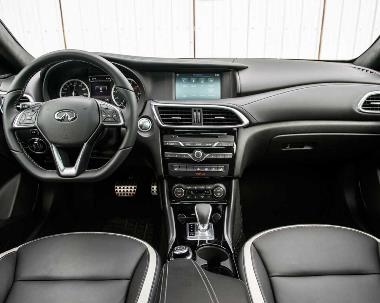-
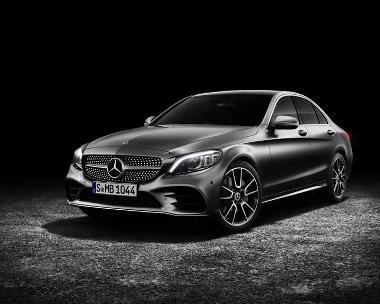
2019 Mercedes-Benz C300: Refreshened with Fluid Design and Added Power and Tech
Wednesday, Jan 9, 2019
Mercedes-Benz is on the move with new designs, enhanced interiors and exteriors. Going with creaseless, smooth architecture and luxurious cabins wi …
Show MoreMercedes-Benz is on the move with new designs, enhanced interiors and exteriors. Going with creaseless, smooth architecture and luxurious cabins with infotainment centers, Mercedes-Benz is refreshening this year. The manufacturer touts the tweaks as “combining emotion with intelligence.”
Among the refreshed lines is the 2019 C-Class Sedan also enhanced with increased power and extended driver assistance systems. Among the highlights are a redesigned front end, newly designed LED headlamps and taillamps, a new, more powerful, and efficient engine that increases output by 14 horsepower, and the extended suite of Intelligent Drive features shared with the Mercedes-Benz E.
Introduced in 1993 as a replacement for the M-B 190, the C-Class was the smallest (at the time) class in the Mercedes-Benz arsenal, and it is currently Mercedes-Benz's top-selling model.
Exterior changes for this year include redesigned front and rear bumpers, and the vehicle equipped with AMG-Line features, get a diamond radiator grille as standard. The front bumper presents a chrome-plated trim as part of the standard vehicle. The rear bumper on the Sedan has a new lower section – its geometry, trim and tailpipe trim vary according to the selected equipment. And you get power-folding side mirrors.
The design of the headlamps and taillamps is defined by clear-lined contours. Exquisitely crafted details add highlights and underscore the C’s modern character, and the C-Class is now equipped with LED headlamps and taillamps as standard. An LED Intelligent Light System with High Performance headlamps and ULTRA WIDE high beam is optionally available.
With steel unibody, aluminum outer sheet metal construction, the C300 measures 184.5 inches long, 71.3 inches wide and 55.3 inches high on a 111.8-inch wheelbase. Ground clearance is 3.5 inches, and we scraped a few times during tests.
The sporty interior is elegant, featuring flowing forms in a new interpretation of modern luxury. The center console is characterized by an elegant graceful trim, now available in Natural Grain Walnut Wood or Natural Grain Grey Oak Wood. The 3D real wood veneer in the center console combines a hand-crafted character with a modern feel. Magma Grey/Black upholstery is newly available for the interior, as is Saddle Brown and Silk Beige/Black for the AMG-Line Interior. The KEYLESS START function is standard and the start/stop button comes in a new turbine-look design. The vehicle key also features a new design.
Inside, C300 offers 44.0 inches of front legroom, but only 26.0 inches in row two. Shoulder room is 54.8 in front and 51.7 inches in row two, But those confines are packed with such standard items as power front seats with driver-seat memory, power tilt/sliding tinted glass sunroof, dual-zone automatic climate control, 40/20/40 split-folding rear seats, SmartKey, analog gauges with high-resolution multifunction display, 7-inch high-resolution central display, 3-spoke steering wheel with Touch Control Buttons, central controller, Bluetooth audio streaming, dual USB audio ports, HD Radio receiver, FrontBass® system, Apple CarPlay and Android Auto.
Gaining 14hp over last year, the C300, C300 4MATIC both come with 255hp in-line 4-cylinder engines, and the 385hp V-6-powers AMG C43 trim. Torque estimates are 273 lb-ft for the 2.0-liter in-line 4 and 384 lb-ft for the 3.0-liter V-6.
My 2.0-liter was matched to a 9G-TRONIC 9-speed automatic transmission and was rated at 22mpg/city, 31mpg/highway and 25mpg combined. My tests yielded an average of 24.6mpg.
Given a factory estimate of 5.9 seconds for a zero-to-60 sprint (the 3.0-liter V-6 is manufacturer-estimated at 4.5 seconds), inclement weather canceled track tests, but last year’s tests with the smaller-hp engine (241 hp) showed 6.8 seconds and a 15.2- quarter-mile, and this year’s more powerful (by 14hp) engine seemed quicker and accelerated smoothly. Power was always there when called upon.
From a safety perspective, C300 pays attention with front-impact airbags, side impact airbags, overhead airbags, knee airbags, seatbelt pretensioners , anti-whiplash head restraints, anti-lock brakes, stability control and a security system that has a means of anticipating and/or detecting unwanted vehicle intrusion. The vehicle is equipped with an ignition disable device that will prevent the engine from starting if the correct original manufacturer key is not used.
The 2019 Mercedes Benz C300 sedan bases at $41,400 in Black or Polar White – other colors will cost extra. My test ride was bathed in Selenite Metallic (dark gray) for an extra $720. AMG styling starts at $2000 extra, but mine was a base C300. The Exterior Lighting package adds Intelligent Light System with Ultra Wide Beam headlamps and Adaptive Highbeam Assist for $900. A rear spoiler added $300; cool LED logo light projectors added $200; Magma Grey leather upholstery in the Leather Seating Package with Memory for front passenger seat added $1950; Heated front seats were $580; Heated Steering Wheel was $250; the Multimedia Package with COMMAND navigation, touchpad controller, enhanced voice control, Car-to-X Communication and a 10.25-inch high-resolution center display added $2600; a panorama roof added $1000, inductive wireless charging and NFC pairing added $170, and the $2250 Driver Assistance Package added active distance, steering and evasive steering assist, brake and cross traffic assist, emergency stop, speed limit, blind spot and lane change assist, for a sticker-as-tested of $51,930.
Visit www.CarlisleEvents.com for more on the automotive hobby.
Mike Blake, former editor of KIT CAR magazine, joined Carlisle Events as senior automotive journalist in 2004. He's been a "car guy" since the 1960s and has been writing professionally for about 30 years.
-
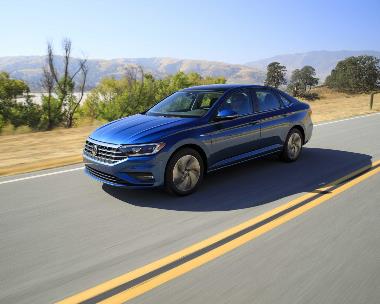
2019 Volkswagen Jetta 1.4T: Fun to Drive, Larger and More Coupelike
Wednesday, Jan 2, 2019
We begin our coverage of 2019 models with the new, seventh-generation 2019 Volkswagen Jetta. VW’s best-selling car was once offered in sedan and ha …
Show MoreWe begin our coverage of 2019 models with the new, seventh-generation 2019 Volkswagen Jetta. VW’s best-selling car was once offered in sedan and hatchback configurations, but is now only presented as a sedan.
For the 2019 model year, the Jetta is based on Volkswagen’s Modular Transverse Matrix (MQB) platform architecture. Working with the flexible MQB platform allowed the designers to reshape the body, creating a longer wheelbase, wider track, and a shorter front overhang. The fast-sloping rear roofline translates into a coupe-like profile. Dynamic lines and taut surfaces combine with the new silhouette to give Jetta a look that is elegant, yet athletic.
Compared with the outgoing generation, Jetta grows outside in every direction. It is longer, wider and taller than the outgoing model. The increased exterior proportions add up to more interior space than the previous car as well. While larger than earlier editions, Jetta is still compact at 185.1 inches long (1.8 inches longer), 70.8 inches wide (an increase of 0.8 inches) and 57.4 inches high (0.2 inches higher) on a 105.7-inch wheelbase (a gain of 1.3 inches), with a ground clearance of 5.8 inches (up 0.6 inches). Jetta seats five and weighs in at a light 2970 lbs, 220 lbs lighter than before, for the automatic transmission version.
The new front end design, with its emphasis of horizontal lines still identifies with VW. Specific to the model is the distinctive unit formed by the radiator grille and the standard LED headlights. The trapezoidal grille is composed of four chrome bars, two of which flow into the headlight housings where the LEDs pick up the lines and connect them for a wrap-around effect.
The car's silhouette is marked by its taut surfaces and a long, extended side window. The coupe-like impression of Jetta is reinforced by an offset roofline known as a 'phase'—a narrow strip that runs parallel to the actual roofline and into the C-pillar—which visually reduces the car's height.
Jetta’s upscale driver-centric interior architecture has been redesigned, having been engineered for increased comfort while supporting a sophisticated, upscale design. The 2019 Jetta has more headroom, knee room, and shoulder room than the previous car, and both the instruments and the infotainment system are arranged in an easy-to-read horizontal orientation.
The cabin is accommodating with an un-compactlike at 38.5 inches of front headroom (a gain of 0.3), with 37.2 inches in row two (up 0.1); shoulder room is 55.9 inches in front (0.7 inches more than last year) and 54.0 inches in the rear (up 0.4); while legroom is marginally tighter, but still a comfortable 41.1 inches for row one and 37.4 inches for the second-seat passengers. Trunk room has shrunk from16 cu.ft. to 1 cu.ft.
Fun to drive, Jetta’s 1.4T is powered by the base 1.4-liter inline four-cylinder turbocharged/intercooled engine that provides 147hp and 184 lbs.-ft. of torque. A 2.0-liter 220hp turbo engine will be available in the GLI trim for 2020.
Both the six-speed manual and the eight-speed automatic versions are rated well with the automatic EPA-rated at 30mpg/city, 39mpg/highway and 34/combined for the 1.4. The manual tops at 40mpg highway. My week of tests in the automatic averaged 33.3mpg.
My automatic SEL Premium trim accelerated and turbo’d-in seamlessly, and delivered solid acceleration off the line. Speed increase was predictable and reliable when needed, and rack tests showed a 7.6-second zero-to-60mph sprint and a 16-second quarter-mile.
My Jetta handled consistently, but quick acceleration and turns resulted in severe body lean. The rack-and-pinion, electric steering with power assist was a bit vague, but all in all, in varied tests, Jetta was balanced and responsive for the niche.
Building on its rep as a top safety vehicle, the 2019 Jetta offers a combination of both passive and active safety systems that are engineered to meet or exceed current crash regulations. And Jetta’s MQB chassis is a much more rigid architecture than the previous version, which pays dividends in safety for both passengers and pedestrians alike. Highlights include a rigid laser-seam-welded bodyshell, crash-optimized, energy-absorbing front end, and heat-formed steel center B-pillars.
The base 2019 Jetta S 1.4T starts at $18,545, followed by the 1.4T SE at $22,155 (adding a Panoramic sunroof and keyless push-button start); the R-Line at $22,995 with special alloy wheels and two-tone leatherette seating; the SEL at $24,415 with 10-color interior ambient lighting, BeatsAudio® and VW Digital cockpit added; and the SEL Premium starting at $26,945 with metallic alloy wheels and premium finish, 8-inch touchscreen navigation, leather seating surfaces and ventilated front seats.
My test Jetta SEL Premium was bathed in Silk Blue Metallic exterior paint, mated to a Titan Black Leather interior. I prefer a manual transmission in sports cars, but my test ride was outfitted with an 8-speed automatic with Tiptronic® and Sport mode as standard for the trim level. Monster Mats® (great for mud and winter weather) added $105; and MuddyBuddy® trunk liner added $105. Side window deflectors added $135; splash guards added $116; Auto-dimming mirror with HomeLink® added $285; Bumperdillo® rear bumper protector added $110; and destination charges added $895, for a sticker-as-tested of $28,696, to start 2019 under $30K.
Visit www.CarlisleEvents.com for more on the automotive hobby.
Mike Blake, former editor of KIT CAR magazine, joined Carlisle Events as senior automotive journalist in 2004. He's been a "car guy" since the 1960s and has been writing professionally for about 30 years.
-
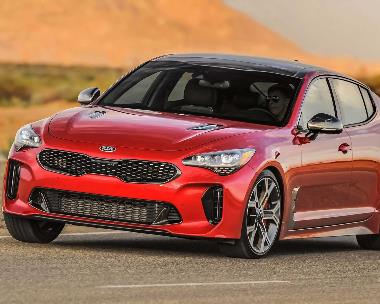
2018 Car of the Year: Kia Stinger: New Sports Sedan is Powerful and Luxurious
Wednesday, Dec 26, 2018
Last week, our “Car Buy of the Year,” Top-10 list focused on the “best bang for the buck,” with the 2018 Hyundai Kona winning top honors. This week …
Show MoreLast week, our “Car Buy of the Year,” Top-10 list focused on the “best bang for the buck,” with the 2018 Hyundai Kona winning top honors. This week, we present our “Car of the Year” list, in which we concentrate on the best car, truck, crossover or SUV and what it delivers, regardless of price – just the pure vehicle – and how it feels to be behind the wheel.
For our 14th annual Car of the Year list, we see new models, sports-luxury cars, iconically badged SUVs, legendary sports cars, nostalgic muscle cars, Eurocars, sporty sedans, a luxury sedan and even an econo-compact SUV.
My rules: To make this list, I must have test driven the car in calendar 2018 and it must have stood out from the pack, surprised me, impressed me, and satisfied the “car guy” in me, as well as amaze any passengers or onlookers who rode in or saw the vehicle.
I test drove 54 different vehicles this year, and after a weeklong (in most cases) assessment as a daily driver and/or track car, I graded each ride in the following categories: Interior; Safety; Power; Handling/Ride; Economy/Price; Looks; Niche-fitting and a Miscellaneous grouping in which I took into consideration the “feel-good” factor and other intangibles. Each category had its own integrity and encompassed such items as driver intuitiveness, comfort, easy-to-read instrumentation, quietness and ease of surroundings. In each category I award from zero to 10 points (10 being perfect)..
Last year, a Lexus LC 500 luxury Coupe won the title, and this year, an all-new mid-size luxury sedan from a traditionally non-luxury badge combined elegance and power, performance and grace to take the crown. Prices reflect sticker-as-tested.
No. 1 Kia Stinger: Dynamic new sports car combines athleticism and luxury -- $53,255
Kia has come a long way, and with the all-new 2018 Kia Stinger, the manufacturer has entered the mid-size luxury four-door sports car segment debuting an athletic, bold, adventurous performance car with luxurious accommodations. From its sleek front clip through its graceful sides and slender shoulders, Stinger exudes a muscular confidence. Inside, Stinger exudes an aircraft-like feel filled with upscale accouterments. It is powered by a 3.3-liter twin-turbo V-6 with 365 hp and 376 lbs-ft. and it blazed a 4.7-second zero-to-60mph dash and a 13.2-second quarter-mile. My test Stinger GT2 averaged 22.0mpg in mixed-use driving, and exhibited solid sportscar exuberance, acceleration and handling.
No. 2 Jaguar E-Pace: Compact luxury SUV with the look and feel of a ‘Cat -- $55,110
An all-new compact-luxury crossover with a Catlike look indicative of its Jaguar DNA, E-Pace packs the design and performance of a Jaguar sports car into a practical and connected all-wheel-drive vehicle with SUV practicality. E-Pace features a four-cylinder Ingenium gasoline engine that delivers 296 hp and 295 lb-ft of torque. At the track, I zipped from zero-to-60mph in an impressive 6 seconds flat during a 14.5-second quarter-mile. My mixed-use tests averaged 23.3 mpg.
No. 3 Corvette Grand Sport: Blazing hot and super cool on highway or track -- $82,715
Finishing third for the second straight year, the Corvette Grand Sport borrows from Stingray design cues with a touch of Z06, including the front grille and wider rear fenders, which give it an aggressive stance and a wide track. High tech and luxurious inside, performance is key as the 6.2-liter V-8 roars out 460hp and 465 lb-ft of torque and rocketed to a 3.9-second zero-to-60mph sprint and 12.3-second quarter-mile. My tests averaged 16.3 mpg.
No. 4 2018 Chevrolet Camaro ZL1: Historically powerful, hot and fast -- $72,515
The most powerful Camaro ever, and highest hp on this list, my 2018 Camaro ZL1 and its 650 horses/650 lb-ft of torque blazed the dash in 3.4 seconds (hand-timed), and finished off a quarter-mile in 11.4 seconds. Traditional Camaro styling lives on with a muscular and sporty architecture, sculpted creases, a proud undergrille, a low and wide stance and enhanced interior packed with infotainment. Camaro’s structure and balance was race-car precise.
No. 5 Ford Mustang GT: More Pony Power and enhanced exterior and tech -- $45,875
Also last week’s No. 7 CAR BUY of the YEAR, the Ford Mustang GT has tweaked up with a sleek new design, more advanced tech and improved performance enhancements. The 5.0-liter V-8 provides 460hp and 420 lb-ft and can be mated to 10-speed transmission. On the highway, you have ground-hugging stickiness and cornering confidence. Muscular and attentive, I dashed from zero to 60mph in 4.7 seconds during a 13.3-second quarter-mile, and I averaged 18.2mpg in mixed-use tests.
No. 6 Volvo XC60: Full redesign, new safety suite for premium mid-sized SUV -- $52,070
Volvo XC60 has been completely redesigned for 2018. XC60 keys in on safety with Volvo’s ground-breaking City Safety system, and there’s enhanced driver infotainment, a new exterior and new CleanZone four-zone climate system that removes harmful pollutants and particles from outside to deliver fresh air on the inside. Its 2.0-liter 4-cylinder engine that provides 250hp and 258 lb-ft of torque got me 22.2 mpg and finished off a sprint in 6.9 seconds and a quarter-mile in 15.3.
No. 7 Toyota Camry: Midsize family sedan evolves with sportscar tendencies -- $38,017The all-new eighth-generation Toyota Camry is an established mid-size family sedan that has turned into a sports car … of sorts. Redesigned with a sporty and upscale image both inside and out, and longer, wider and closer to the ground for increased ride dynamics, its 3.5-liter engine is rated at 301hp and 267 lb-ft of torque. A zero-to-60mph dash was accomplished in a smooth 5.8 seconds during a 14.4-second quarter-mile. Fuelwise, I averaged 26.7mpg in mixed-use tests.
No. 8 Hyundai Kona: Sub-Compact CUV marketed to youthful driver-adventurers -- $29,805
The lowest-priced and lowest-hp vehicle on this week’s list was also last week’s No. 1 CAR BUY of the YEAR. Hyundai has targeted youthful “urban adventurers” with its all-new sub-compact crossover utility vehicle, the 2018 Hyundai Kona. With aggressive body styling, a sporty demeanor, top-of-the-line safety technology and advanced infotainment features in a compact footprint, Kona handles well and its 1.6-liter turbo generates 175 hp and 195 lb-ft of torque for an average of 26.7 mpg.
No. 9 Dodge Charger: America loves its muscle, then and now -- $41,500
Drawing on cues from the historic 1969 model, Dodge Charger is America’s only four-door muscle car and the sales leader in the large car segment for five years running. This year’s model gets new cosmetics, interior upgrades, wheel packages and colors on various models. The 5.7-liter HEMI V-8 that powered my R/T trim Charger stampedes out 370 horses and 395 lbs-ft of torque, averaged 22.2mpg and completed a zero-to-60mph sprint in 6 seconds during a 14.4-second quarter-mile.
No.10 Buick Regal GS: More powerful, sportier and upgraded cabin -- $44,255
Buick has gone all-new with Regal in 2018, with a sleek, sporty design increased horsepower, an upgraded cabin and advanced infotainment. Buick offers a sculptured Euro-sportiness with aggressive front and rear fascias, unique GS-specific cabin additions, and an aluminum 3.6-liter direct injection V- 6m rated at 310hp and 282 lb-ft of torque. My week of mixed-use tests yielded an average of 20.7mpg and my zero-to-60mph time was 5.5 seconds during a 14.5-second-flat quarter-mile.
Next week we begin coverage of the 2019s, and we start learning about next year’s best cars.
Visit www.CarlisleEvents.com for more on the automotive hobby.
Mike Blake, former editor of KIT CAR magazine, joined Carlisle Events as senior automotive journalist in 2004. He's been a "car guy" since the 1960s and has been writing professionally for about 30 years.
-
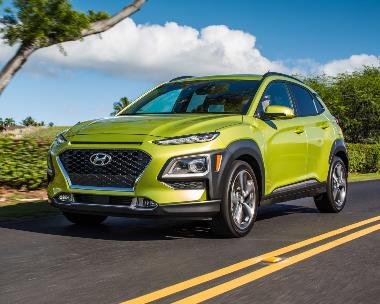
2018 Car Buy of the Year: Hyundai Kona: Urban-Smart Compact CUV
Wednesday, Dec 19, 2018
For the 14th consecutive year, we finish up the model year in ALL ABOUT CARS with a Top-10 list consisting of the vehicles we tested and reviewed t …
Show MoreFor the 14th consecutive year, we finish up the model year in ALL ABOUT CARS with a Top-10 list consisting of the vehicles we tested and reviewed this year; and after rating them, have concluded that they are the “best deals on wheels” in 2018. Next week, we will present our “vehicle of the year” regardless of price.
Now, just because a vehicle delivers the best bang for the buck, it doesn’t always translate into sales. In 2018, trucks were the top three-selling vehicles in the U.S., and no truck made my list this year. To make ALL ABOUT CARS’ “Car Buy of the Year” list, sales is not part of the equation. To be considered for this list, I must have test-driven the vehicle during calendar 2018, and dollar-for-value, or worth vs. cost carries the most weight, though some abstracts still apply.
Rated for this year’s competition, I test drove 54 vehicles, drove them, tested them and examined them for about a week each, using them as daily drivers around town for errands and for maneuvering; on the highway for long trips, for passing, stability and for fun; accelerating them and braking them hard on straight tracks and banked venues, auto-crosses and drag strips, and checking out what passengers and onlookers reported.
The cars tested vary from year to year. Some years we have higher-priced vehicles of great value on the list -- a low price is not always the sign of a great value. Price certainly is a factor; as is fuel economy, but the vehicle’s personality, how it fits its niche and how you feel driving it all play a part. This year, the winner was one of three finalists priced under $30,000 and eight of the 10 were under $40,000. Two cars on the list were priced in the $40,000 range.
The candidates were graded in eight categories, with vehicles earning 10 points for best possible to 1 point for worst possible. I gave only six perfect 10s in any category all year; no vehicle received less than a charitable 5 in any category, and no vehicle received more than a single category 10. My eight graded segments are: Interior; Safety; Power; Handling/Ride; Economy/Price; Looks; Niche-fitting and a Miscellaneous grouping in which I took into consideration the “feel-good” factor and other subjective intangibles
One more thing: the difference between this week’s Best Car Buy winner and next week’s “Car of the Year” champion is that this week it is all about best value for the price across all eight categories, and not necessarily the lowest amount of dollars spent. Next week’s winner is all about the car, truck or crossover and what it delivers, regardless of price – just the pure vehicle.
My 2018 Top Buys of the Year are led by two small SUV-CUVs, topped by a sporty above-badge sports-ute; and on the list were a minivan, a muscle car and a flagship sedan. Two on this list ALSO were finalists for next week’s “Car of the Year.” Prices reflect my review vehicles-as-tested.
No. 1 Hyundai Kona: Sub-Compact CUV targets urban adventurers -- $29,805
For the second year in a row, Hyundai topped my list (last year, the Hyundai Elantra came out on top). This year, Hyundai has targeted youthful “urban adventurers” with its all-new sub-compact crossover utility vehicle, the 2018 Hyundai Kona. With “urban smart armor” exterior styling, Kona has a bold and sporty demeanor packed with leading safety technology and advanced infotainment features in a compact footprint. Kona offers two engine choices and my test ride had a 2.0-liter 4-cylinder Atkinson engine that produces 147 horsepower and 132 lb.-ft. of torque and is mated to a six-speed automatic transmission. Kona was fun to drive and averaged 26.7 mpg during a week of mixed-use runs. Look for Kona next week on the CAR of the YEAR list.
No. 2 Kia Niro: Sporty hybrid CUV adds safety and tech packages -- $29,710
Niro is a Hybrid that doesn’t look like a Hybrid, packaged as a Crossover that doesn’t look or act quite like a Crossover. Upgraded for 2018 with a new plug-in model, new cosmetics, and a full suite of safety and tech enhancements. The two-tiered power system is rated at 139hp and 195 lbs.-ft of torque, and my week of interstate and in-town driving averaged 53 mpg on the highway and 44.2 mpg overall.
No. 3 Honda Accord: All new with enhanced power, styling, connectivity -- $33,322
The 2018 Accord is all-new from the ground up from its structure to powertrain. Re-engineered for weight, safety, aerodynamics and style with a crisp, sporty design, the new Accord has a longer wheelbase and also has improved connectivity and driver-assistive technology. The new 1.5-liter, 16-valve DOHC direct-injected turbo engine produces a peak of 192 horsepower and 192 lb.-ft. of torque. I averaged 33.4 mpg in tests.
No. 4 Subaru Forester: Performance, Intuitive Cabin and Safety --$30,296
Subaru Forester remains a sports utility ride for the “granola-and-fresh water” brigade. Lives up to its slogan: “SUV tough, car easy,” with the versatility of a minivan, car and small sports-ute in its abilities. Adds new cosmetics inside and out, and new driving and safety technology. My test ride’s 2.5-liter engine delivered 170 horses and 174 lbs.-ft. and averaged 28.1 mpg.
No. 5 Hyundai Elantra: Increased tech, safety and trims -- $27,865
This popular compact now looks more like a fastback, with its roofline sloped from the windshield to the rear of the car, and redesigned grille, lights, body panels and bumper emphasizing straight lines along the body. Elantra power comes from a Nu 2.0-liter MPI Atkinson Cycle DOHC 16-valve engine that puts out 147 horsepower and 132 lbs.-ft. of torque. I averaged 32.0mpg.
No. 6 Jeep Compass: Compact CUV adds upgraded materials and tech -- $34,415 The Jeep Compass is a compact crossover that on the looks of Grand Cherokee. Compass comes at you with a Premium, sculptural design, wide stance, legendary Jeep seven-slot grille and typical Jeep off-road and in-town abilities. Outfitted with a 2.4-liter Tigershark engine that produces 180hp and 175 lbs.-ft. of torque, mated to a 9-speed automatic transmission, In tests, I averaged 25.7mpg.
No. 7 Ford Mustang GT: More Pony Power, exterior and tech gains -- $45,875
The highest ticket on the list is a best-buy with a sleek new design, more advanced tech and improved performance enhancements … and a 435hp 5.0-liter V-8 that provides 420 lb-ft of torque. With a 22-inch all-digital instrument cluster, improved aerodynamics and Pony history, I averaged 18.2 mpg in lots of on-track and highway tests. A ton of performance, style, tech, muscle and nostalgia at the price. Also on next week’s list.
No. 8 Ford Explorer: Capable, confident, rugged and powerful -- $36,225
Proving that Compact SUVs aren’t the only Crossovers on the list, the 2018 Explorer gets upgraded active safety and driver assist tech systems, a new grille insert, with redesigned and smaller fog light housings, and displays response, power and handling in all ranges. Powered by a 3.5-liter Ti-VCT V-6 engine that delivers 290hp and 255 lbs-ft of torque, a week of mixed-use testing achieved an average of 23.3mpg.
No. 9 Dodge Caravan: Room for seven and priced to sell -- $33,585
The first minivan to ever make my Top-10 list, Caravan is priced at $20,000 less than the No.2-selling minivan – Dodge’s Pacifica. It fits the niche well and shows enough brawn, powered by a 3.6-liter Pentastar V-6 engine mated to a six-speed, adaptive electronic control transmission with an electronically modulated torque converter clutch. The system puts out 283 hp and 260 lbs-ft of torque. I average 26.9 mpg in tests.
No. 10 Toyota Avalon: Flagship mid-size sedan is premium and bold -- $43,412
The second highest price on this list, Toyota’s luxury sedan, the Avalon has a coupe-like profile, bold grille, discrete chrome trim, chiseled shoulder line and sculpted side sheet metal. Avalon remains unique in its segment with the choice of V6 or hybrid powertrains. The Avalon’s 3.5-liter, DOHC V-6 with Dual VVT-i produces 268 horsepower and 248 lb.-ft. of torque. I averaged 26.9mpg in tests.
Next week, we present our annual CAR of THE YEAR list… and you will see several of these great buys again.
Visit www.CarlisleEvents.com for more on the automotive hobby.
Mike Blake, former editor of KIT CAR magazine, joined Carlisle Events as senior automotive journalist in 2004. He's been a "car guy" since the 1960s and has been writing professionally for about 30 years.
-
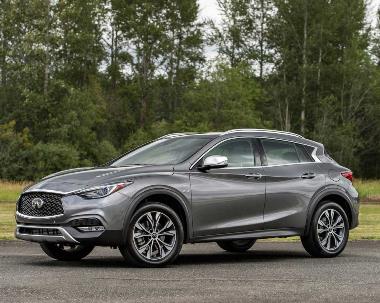
2018 Infiniti QX30: Stylized Compact Luxury Crossover Changes Trims
Wednesday, Dec 12, 2018
The Infiniti QX line (X for Crossover) stands five deep with their SUVs numbered QX30, QX50, QX60 QX70 and QX80 and ranging in size and in an ascendin …The Infiniti QX line (X for Crossover) stands five deep with their SUVs numbered QX30, QX50, QX60 QX70 and QX80 and ranging in size and in an ascending scale and power from the QX30 at 174.2 inches long with a 2.0-liter, 208hp engine to the QX80 at 210.2 inches long with a 5.6-liter, 400hp engine.Show More
Originally part of the Q30 line-up when it was a concept vehicle, Infiniti’s smallest crossover is targeted for younger drivers. The QX30 debuted last year with concept-car styling that is a step above a sporty hatchback, with the appeal of coupe architecture and crossover dimensions and capabilities. It also exhibited a sporty ride and soft-road abilities.
For this second year, QX30 has received only a few changes. Automatic emergency braking, previously optionally available only for the top two trim levels, is now standard on all trims; some upscale equipment has been shifted across the trims; and at mid-year, QX30’s trims were renamed, as the base model is now the Pure, Luxury is Luxe, Premium is Essential, and Sport is still Sport.
While I find QX30 as more of a soft-road than off-road vehicle, it is a luxurious compact SUV with a highly sculpted exterior, unique crossover stance and asymmetric cabin design that live up to Infiniti’s commitment to elegance.
The QX30 combines a balance of coupe sportiness, utility and 5-door versatility. It has a bold demeanor that is paid off with a confident drive and versatile attitude, aided by intelligent all-wheel drive intuitive technologies to enhance safety, comfort and convenience. QX30’s sculpted architecture delivers the look and feel of a luxury coupe with a lavish cabin and a smooth, coupe-like roofline. Constructed with a wide stance, QX30 is 174.2 inches long, 82.0 inches wide and 58.9 inches high on a 106.3-inch wheelbase. Its step-in height is 16.5 inches and minimum ground clearance is 6.8 inches. Curbweight is 4277 lbs. for the Luxe trim version in AWD.
The QX30 Luxe AWD I tested includes unique front and rear lower fascias, extended overfenders, trim-specific black mold-in color side sills, roof rails, distinctive 18-inch aluminum-alloy wheels and a higher ride height than other trims.
The aggressive Infiniti design approach continues inside, with QX30 challenging traditional standards of symmetry through its expressive, modern and dynamic interior.
The asymmetric surfaces feature wave shapes and forceful lines that twist apart and flow away from the driver. These give an "in-motion" feel when natural light moves over the highly sculpted lines and contrasting materials in the cabin, and Premium cabin materials and high-tech infotainment are intuitive and upscale.
With seating for five, the QX30 cabin fits within the small crossover niche, with a tight fit for taller drivers and occupants. Front headroom with a moonroof is 38.4 inches, with rear headroom at 37.5 inches – restricting for anyone over 6-feet tall. Shoulder room is 54.8 inches in front and 53.1 in row two; and leg room is a comfortable 41.3 inches in the first row, but only child-accommodating 33.5 inches for rear-seat passengers. Outward sightlines are hindered, but the overall driving experience is quiet.
Power is delivered by the standard 2.0-liter four-cylinder turbocharged unit that is rated at 208 horsepower, with peak torque of 258 lbs.-ft. available from 1,200 – 4,400 rpm. Turbo pressure keeps the power sufficient when called upon, and the 7-speed dual-clutch transmission system provides seamless acceleration. Highway acceleration is reliable, and in track tests, I ran a zero-to-60mph dash in 6.6 seconds en route to a 15.1-second quarter-mile. EPA rated at 24mpg/city and 33mpg/highway, my week of tests yielded an average of 28.8mpg in mixed-use driving, some of which was on snow-covered roads.
Regarding the ride, QX30 delivers a comfortable, even indulgent experience. The MacPherson front struts and 23mm stabilizer bar work well with the multi-link independent rear and its stabilizer bar to level most pavement and soft-road inconsistencies.
From a safety perspective, QX30 is among the safest cars in its class owing to a range of active safety and hazard avoidance technologies that enhance the driving experience and provide a high level of safety to all occupants. And an Around View Monitor with moving object detection and Intelligent Parking Assist make the QX30 a maneuverable and easy-to-park vehicle.
The base 2018 QX30 Pure starts at $29,950; QX30 Luxe starts at $32.800; QX30 Essential starts at $367,700; QX30 Sport starts at $39,900; QX30 Luxe AWD starts at $34,800 and the QX30 Essential AWD starts at $41,200.
My test QX30 Luxe in AWD included all QX30 Luxe trim features plus Intelligent All-Wheel Drive (AWD); 18-inch machine finished aluminum-alloy wheels; unique front and rear AWD styling; extended overfenders with unique sill panels; roof rails and a raised AWD suspension. Upgrades from the base QX30 included Nappa leather-appointed seating; 8-way power front seats; 4-way power front passenger lumbar; memory seats and mirrors; heated seats and Leatherette-appointed and stitched dash insert.
Loaded as a trim, few extras were needed. Splash guards added $215; all-season floor mats added $155; a reversible cargo protector mat added $120; Infiniti WiFi added $495; a Wireless Smartphone charger added $250, and Destination and Handling added $995 for a sticker-as-tested of $37,030.
> Visit www.CarlisleEvents.com for more on the automotive hobby.
Mike Blake, former editor of KIT CAR magazine, joined Carlisle Events as senior automotive journalist in 2004. He's been a "car guy" since the 1960s and has been writing professionally for about 30 years.
Book with a preferred Hotel

Book online or call (800) 216-1876
